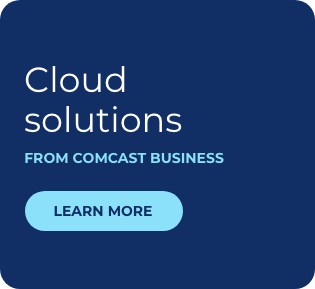Hybrid Cloud Is the Future, but What’s Your Strategy?

Today’s enterprise lives in a multi-cloud world and is looking toward a future where hybrid environments are commonplace, according to a study of enterprise cloud workloads by 451 Research. Less than a third of enterprises – 32 percent – use a single cloud.
But the use of multiple clouds so far isn’t necessarily tidy or well-planned according to the research. Only 15 percent of polled organizations are managing multi-cloud environments with seamless “delivery of business function across different cloud environments.” The rest of the multi-cloud users either enjoy little or no interoperability between environments (32 percent) or “use multiple cloud environments to migrate workloads of data between cloud environments (22 percent).”
These were some of the revelations discussed during a recent webinar, “How to Get On Top of Your Cloud Strategy.” The discussion revolved around the realities of enterprise cloud implementations and how to get a better handle on multi-cloud and hybrid cloud strategies to improve operations and maximize value.
Hybrid Confusion
Currently some confusion persists in the enterprise regarding hybrid cloud environments. Organizations with a mix of applications on premise and off-premise clouds believe they are using a hybrid approach, according to Eric Hanselman, chief analyst of 451 Research. However, if they manage the assets independently of each other, the approach doesn’t live up to the true definition of “hybrid,” which requires interoperability.
“You’ve got all these different clouds. You’ve got all these different management environments. You’ve really sort of waded into this cloudy morass of operational problems in terms of how you’re handling all of that,” Hanselman said. This approach increases staff and operational costs as companies try to manage a disjoined environment.
Hybrid clouds are complex and take some work to set up, but overall if you do it right, there’s a lot of benefits to be gained. Those benefits include cost reductions and a more agile IT environment.
Doing it right starts with matching the workload to the platform, because different workloads are better suited to some environments than others. You want to be able to use the right cloud for the right solution, to put the specialization that is inherent in any cloud to work for you instead of against you.
What Goes Where
In addition to matching applications to cloud environments, organizations need to make decisions on the actual location of each workload. For instance, a company with a mobile app would likely want to place the parts of the application that run UI (user interface) closer to the users to get better performance, Hanselman said.
Companies also have to take into account regulatory requirements that dictate where data resources should be located, how they’re managed and who accesses them, he noted. This is especially relevant when the app touches an international customer base, although there are domestic regulatory requirements that come into play as well.
Keller likened cloud hybrid setups to manufacturing assembly lines. As the product is conveyed down the line, each station performs its piece of the assembly. In a hybrid environment, a similar process is taking place, with the front-end of an application interacting with the back-end where the processing takes place, and the back-end interacting with the database where data resides.
Cloud Refinements
Picking up on the assembly line analogy, Hanselman said the assembly line represents the automation and orchestration piece of the cloud application. The movement through the assembly line is like the automation and orchestration pieces required to make cloud environments operate efficiently.
And that’s the area where enterprises need to invest more – to refine the automation, orchestration and interoperability of clouds so they can enjoy the benefits of a cloud environment, such scalability, agility productivity and cost savings.
To learn more, listen to the related webinar, “How to Get on Top of Your Cloud Strategy.”
Confusion persists around hybrid cloud environments.
Locked Content
Click on the button below to get access
Unlock NowOr sign in to access all content on Comcast Business Community
Learn how Comcast Business can help
keep you ready for what's next.











